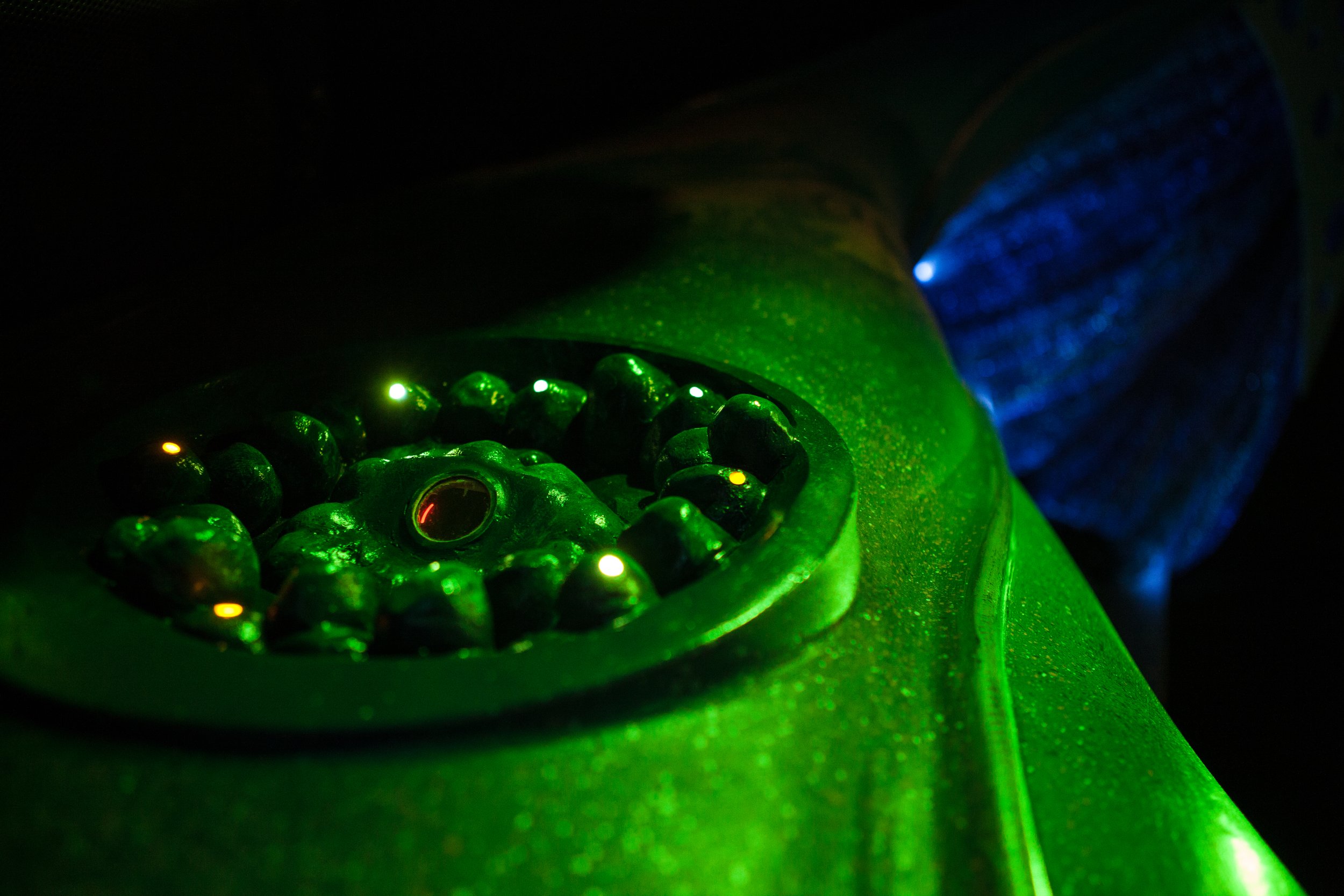
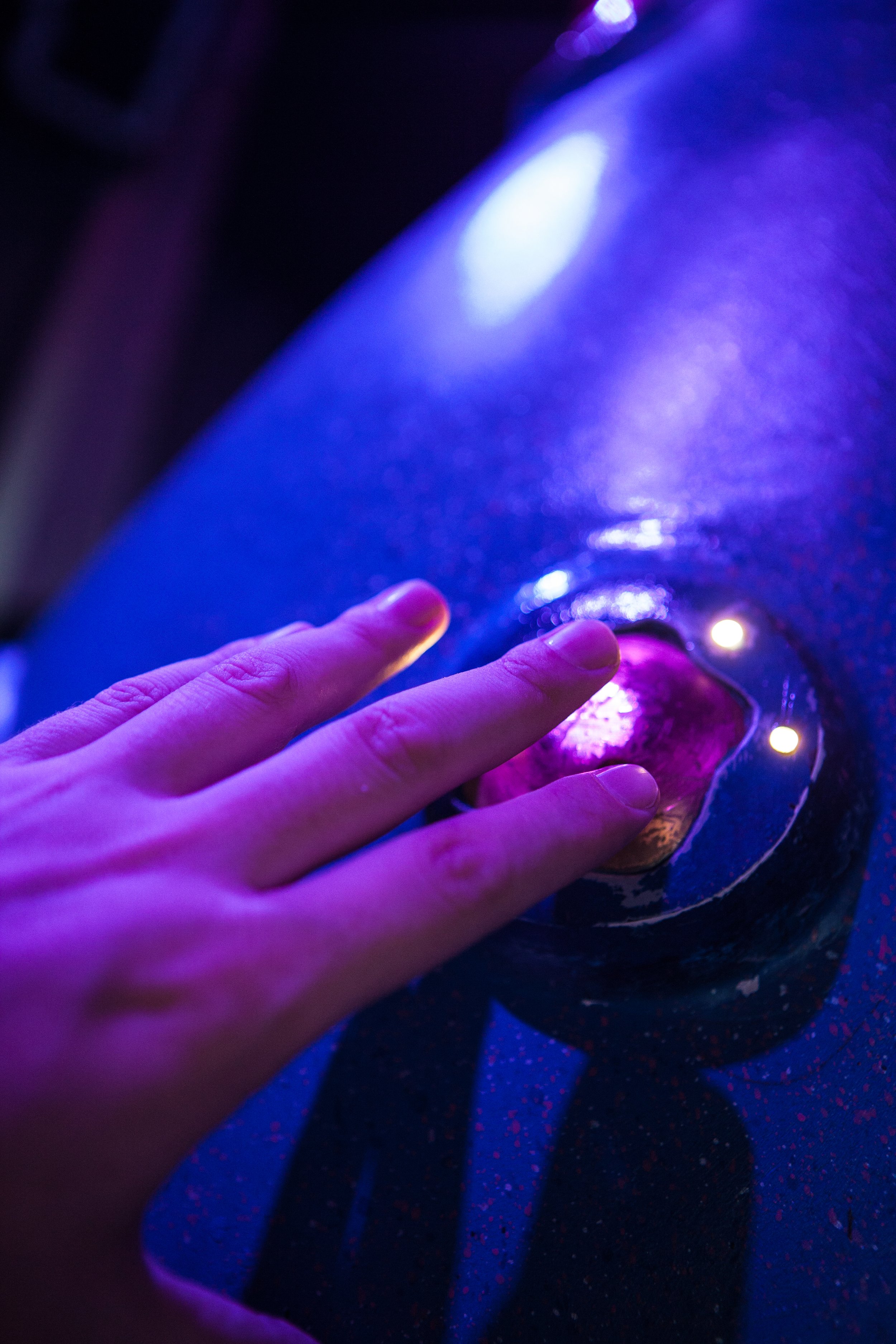
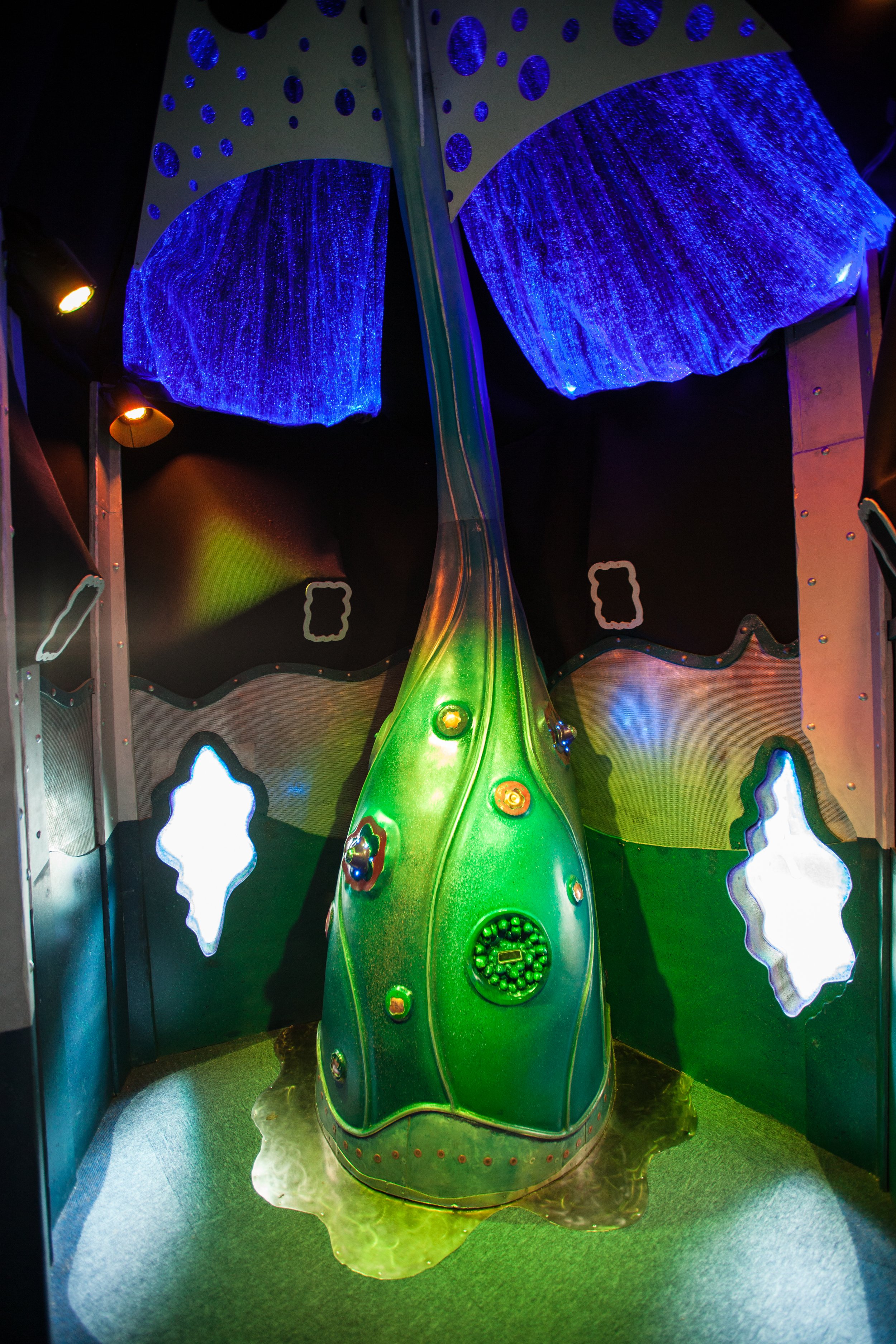
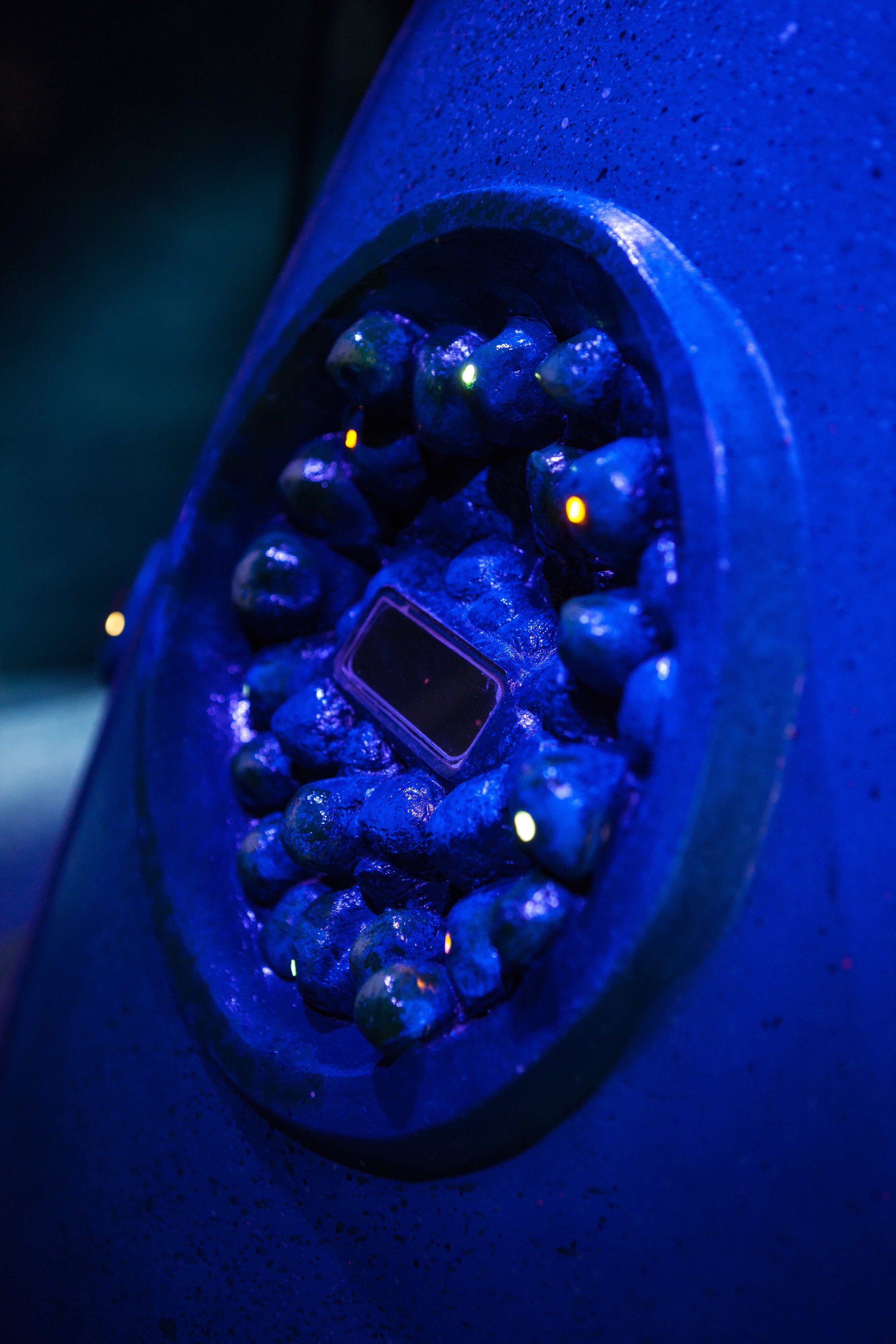
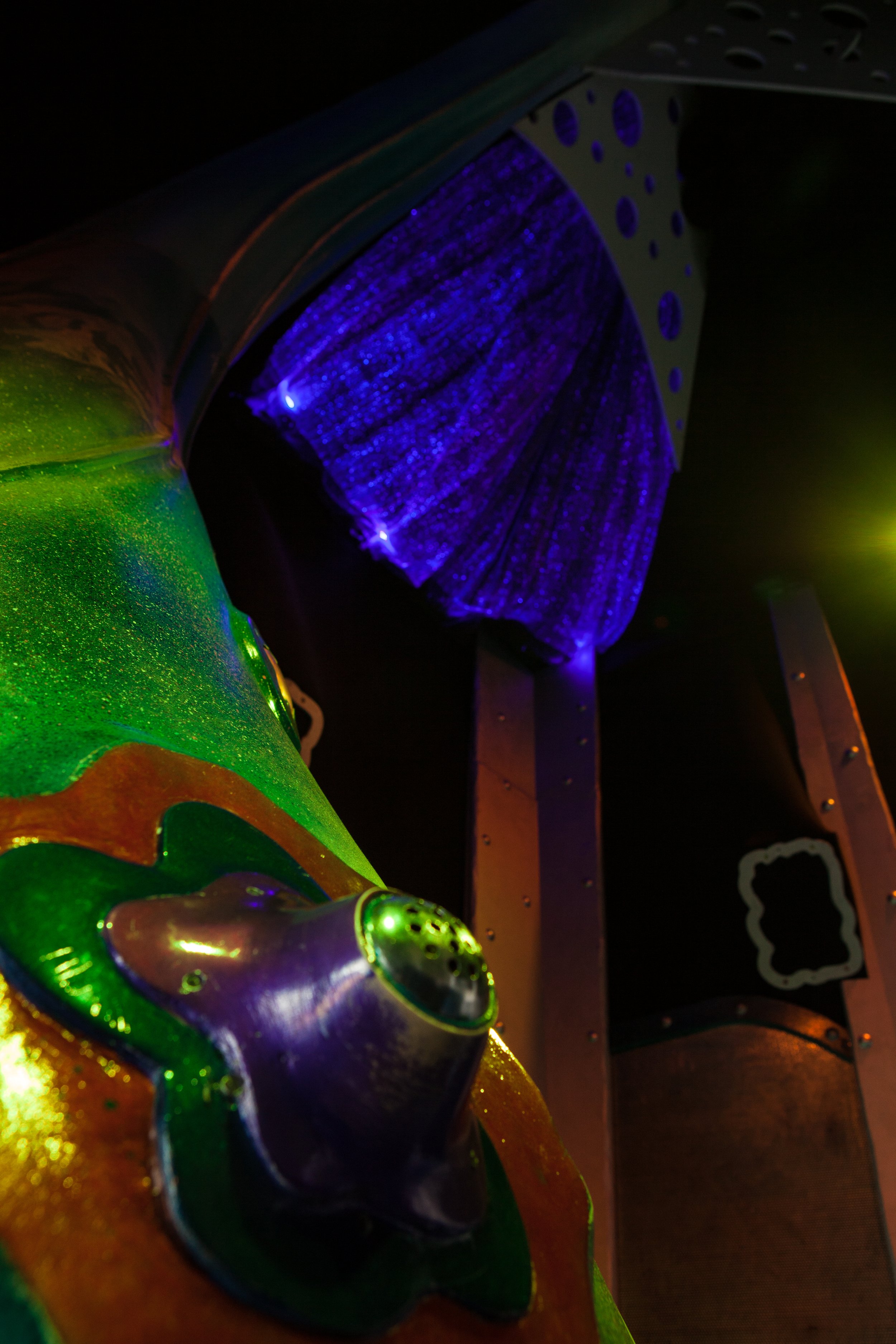



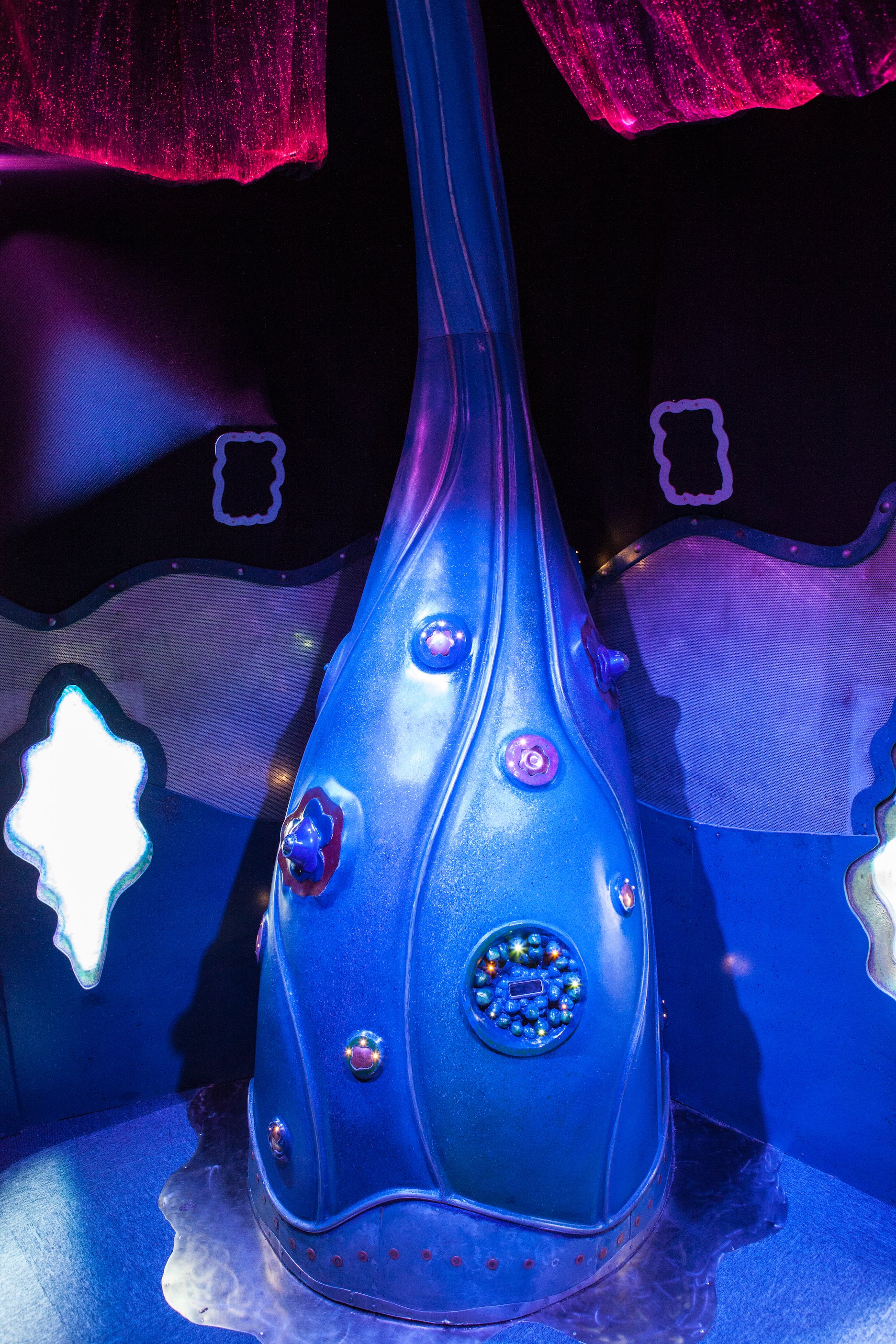
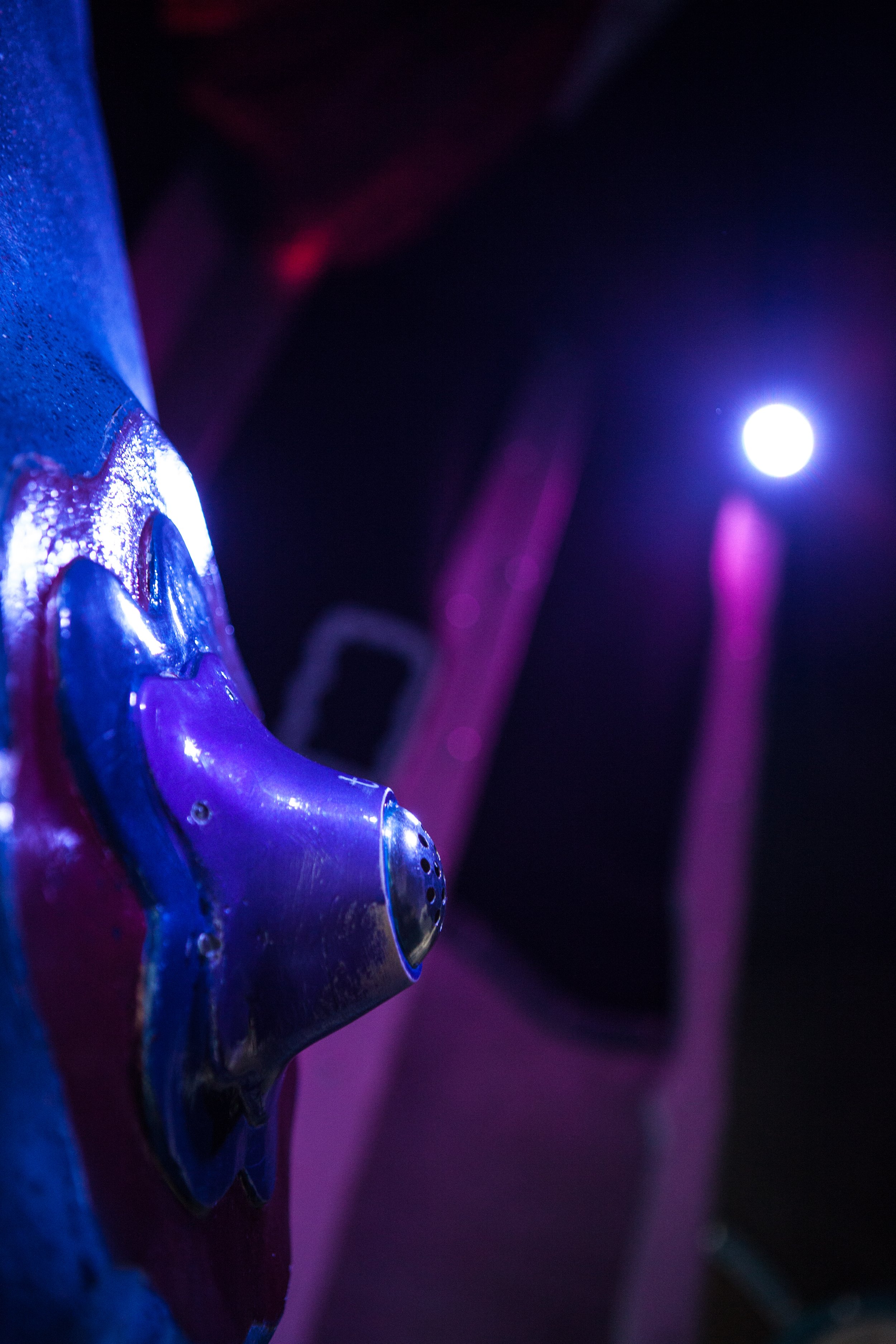
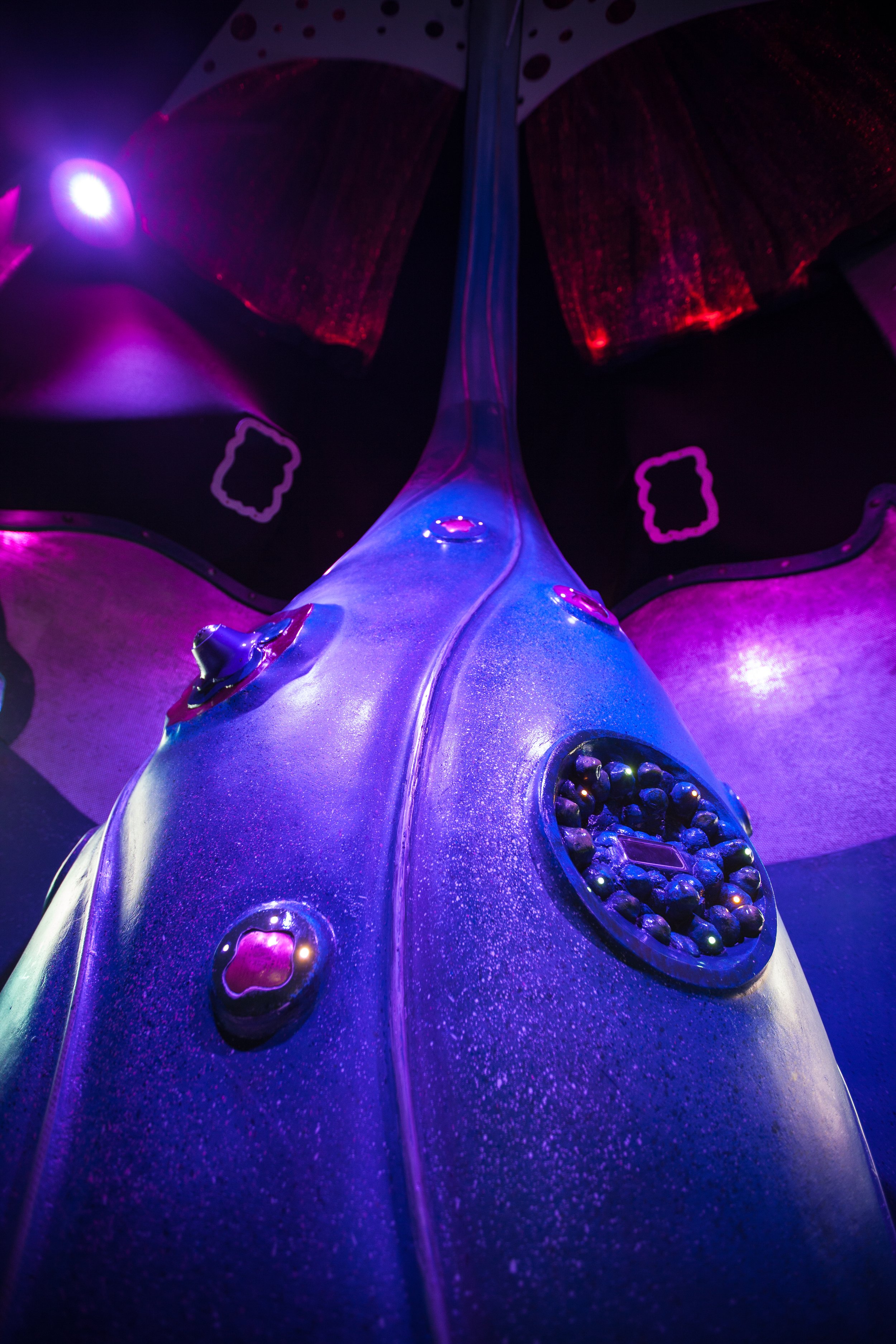
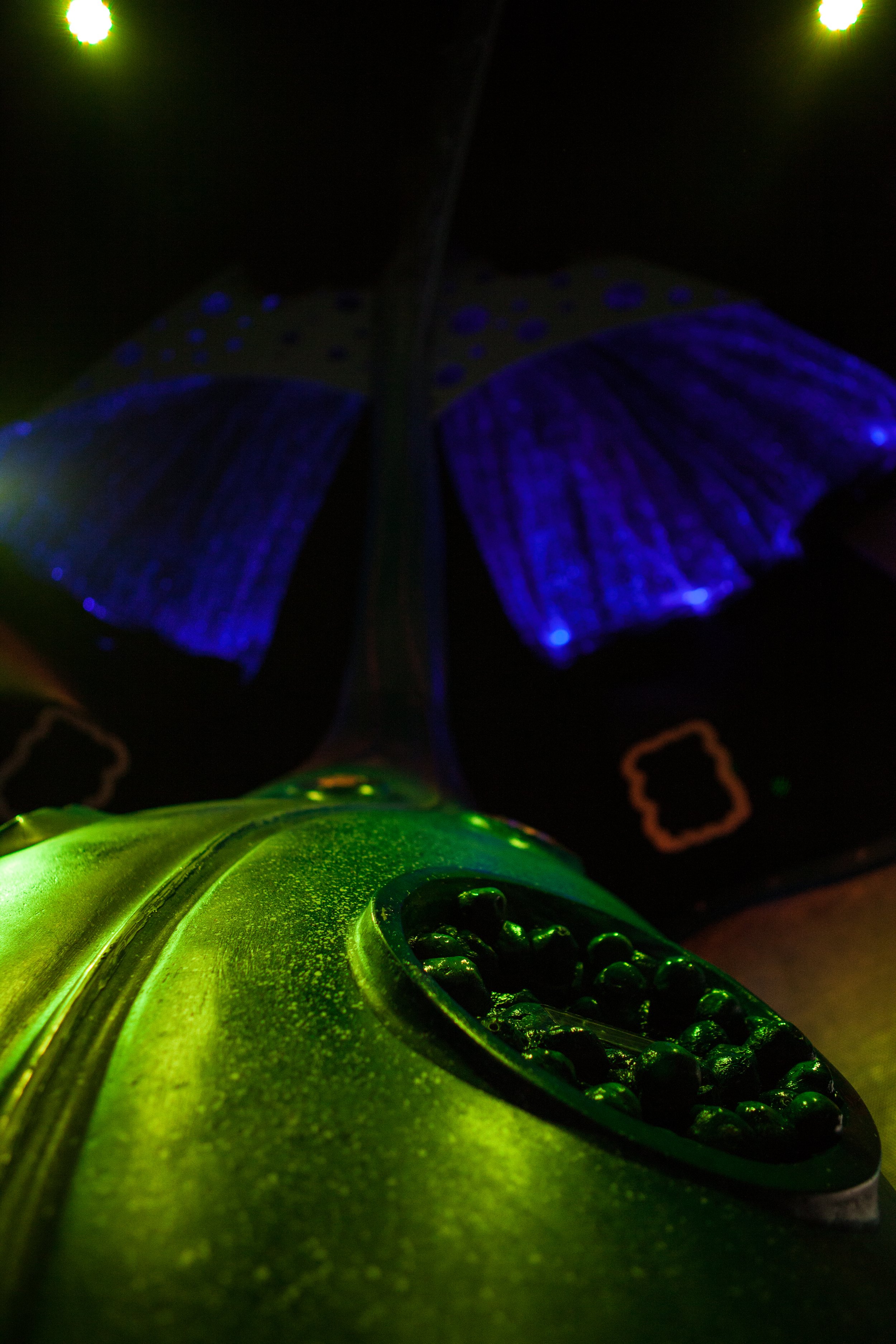
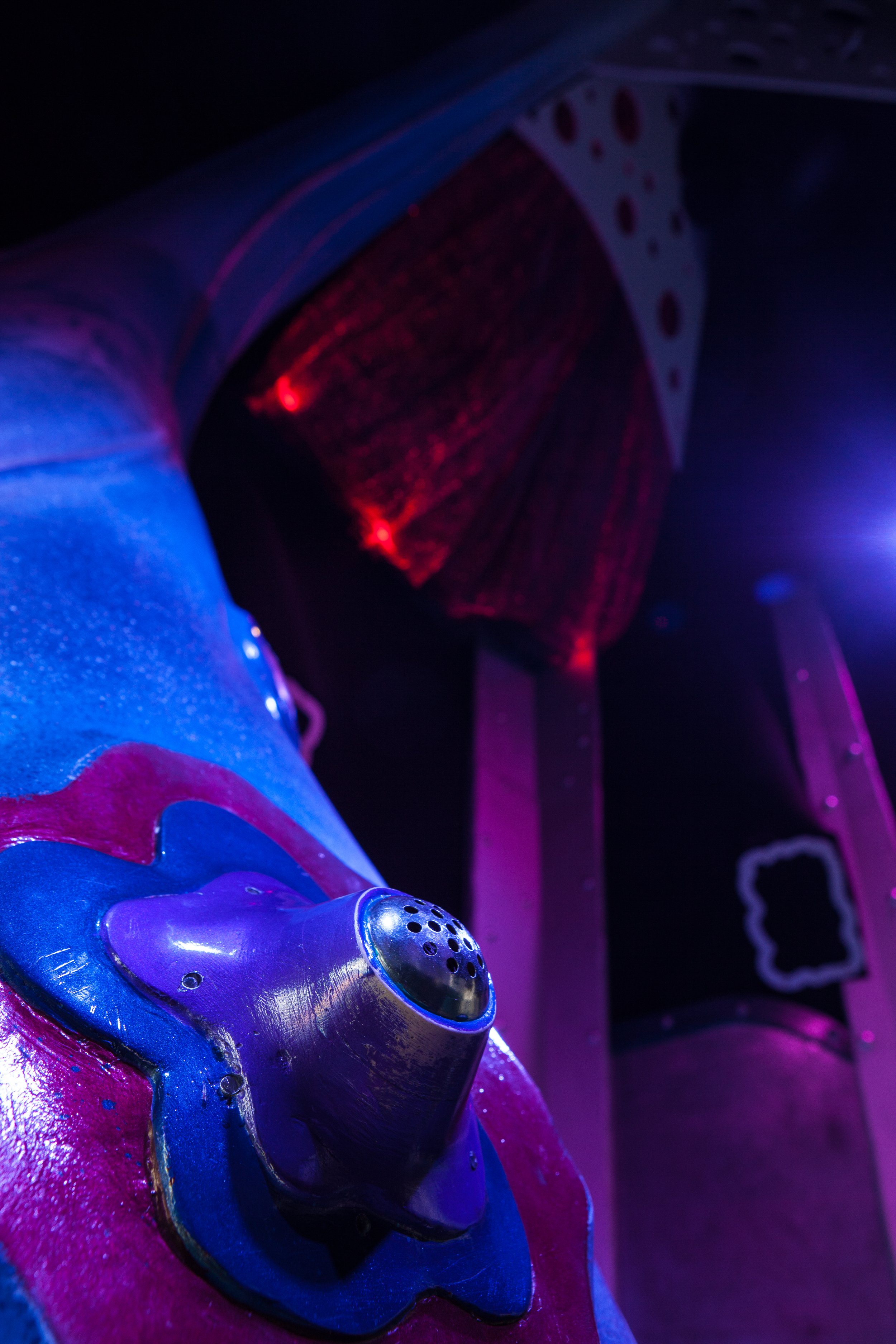
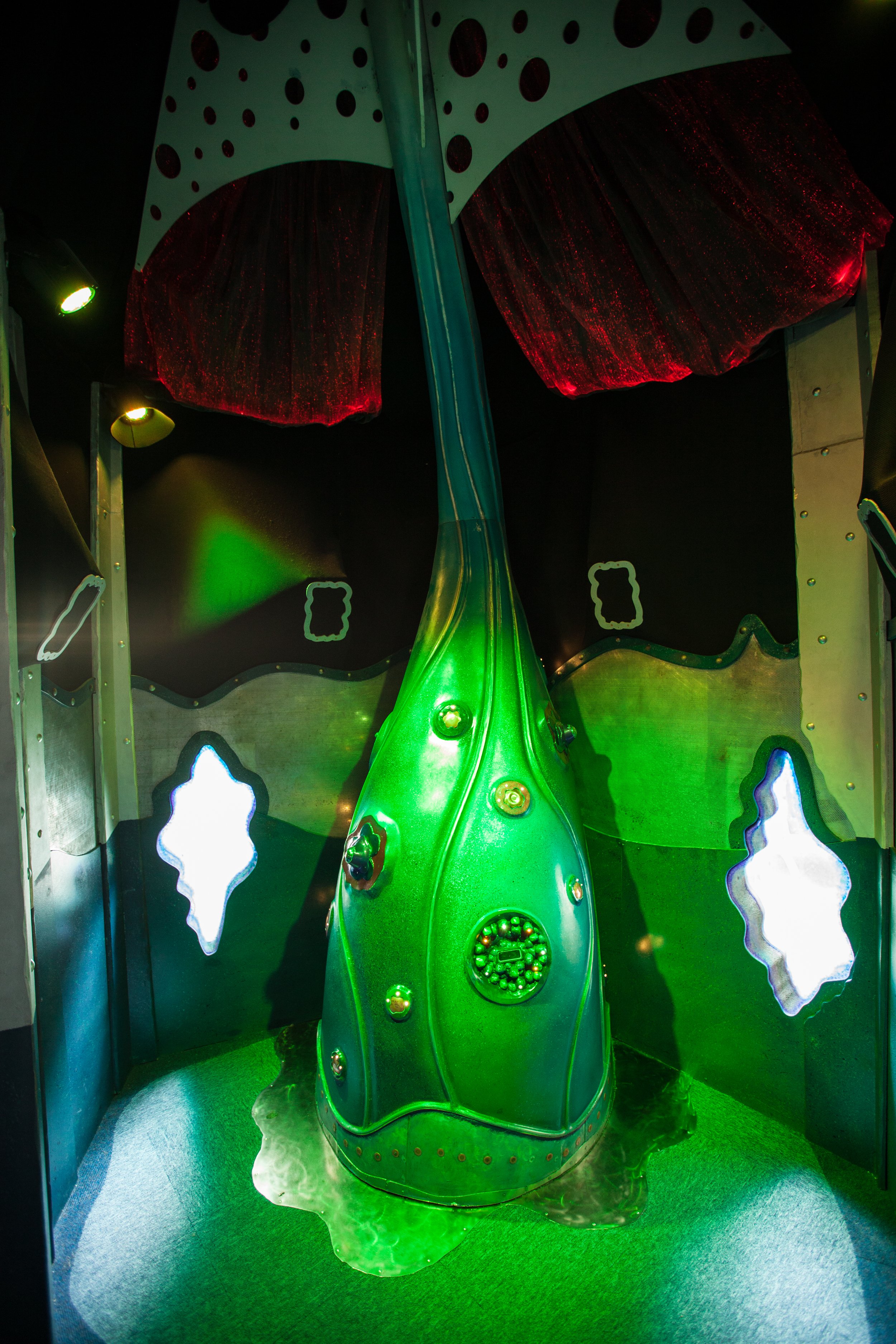
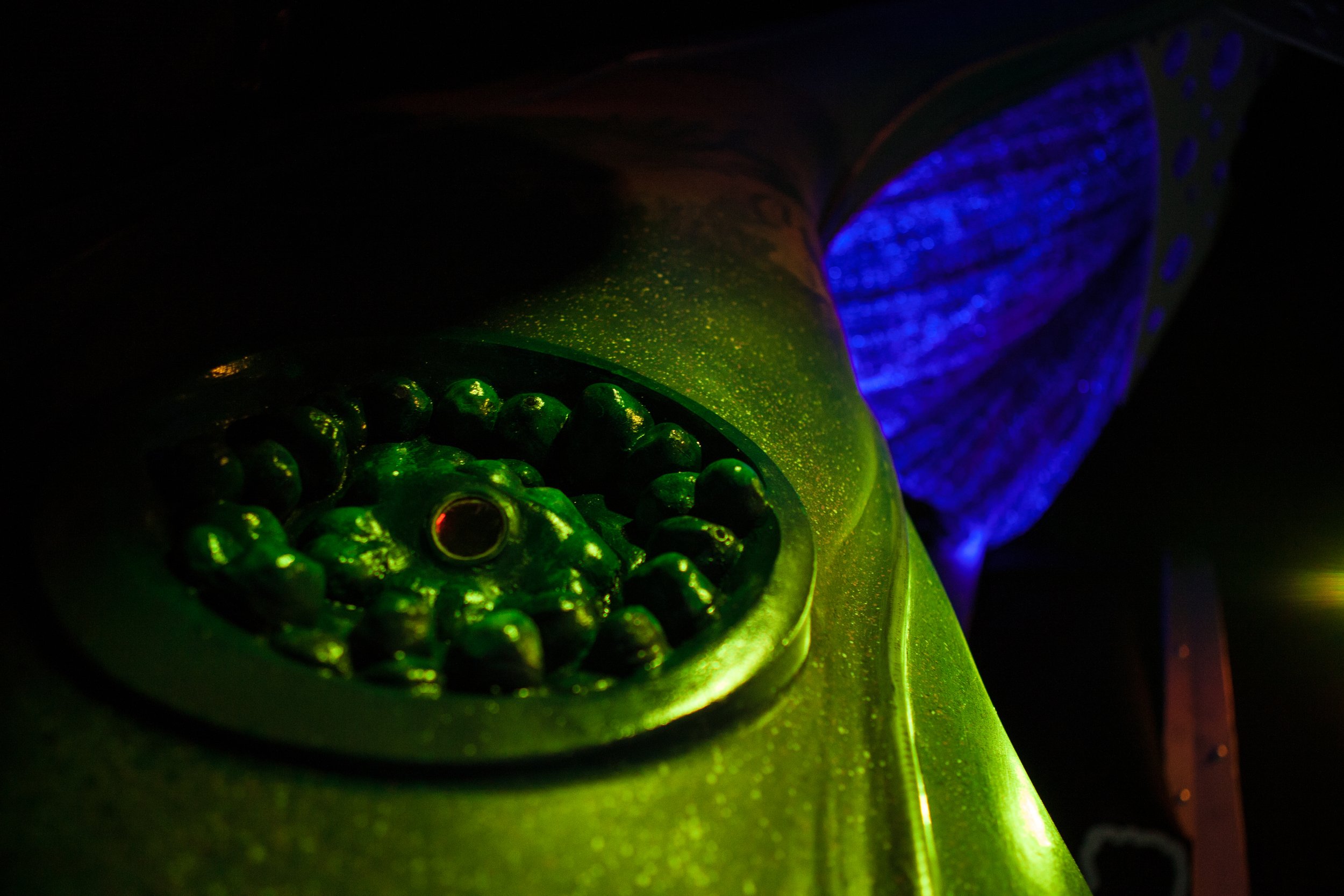
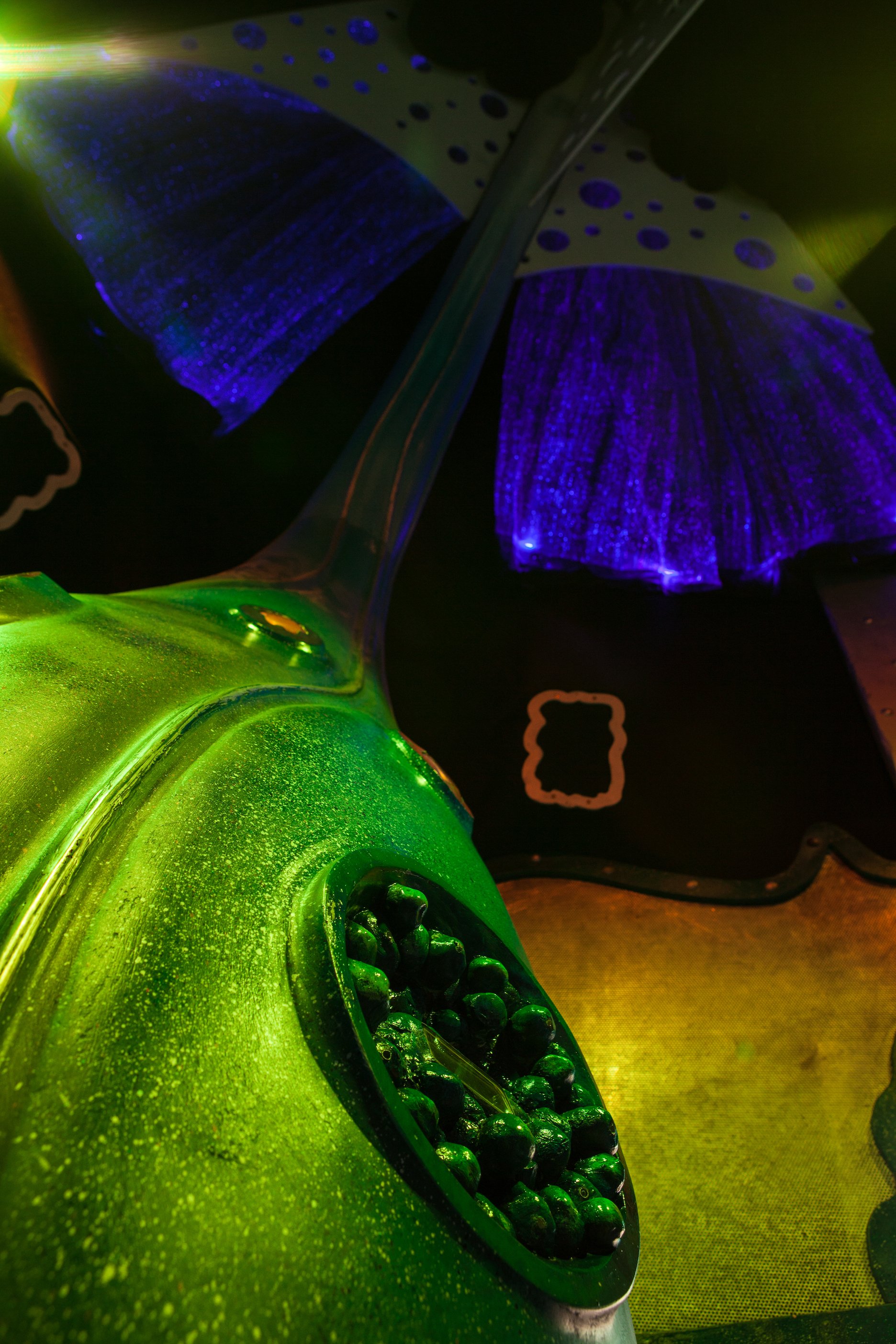

The Voice Trunk was an interactive, sculptural installation that was first installed at the Natural History Museum, London, UK, for a week and then moved to the Winchester Science Centre. It was the first artistic work the Centre hosted. Installed in 2014, and running until 2019, The Voice Trunk invited users, children aged 5-12 and their families, to ‘put their voice inside’ the sculpture and then together, shape how it that sound bounced back. The Trunk was installed inside a custom acoustic shelter. The Voice Trunk took the principles of the Uluzuzulalia interactive performance - inviting children to become extended voice artists, by responding to, and echoing and morphing - their voices across the senses of sound, touch and vision. It made these experiences available to audiences on their own time. It aimed to raise interest in the embodied experience of unsual voicing for the children, and to celebrate that voicing. The Voice Trunk sought to give children and families the space and time they preferred, and allowed them to work in groups. See how the Trunk worked below. The Voice Trunk was an integral part of the Vivacious Voices in Action research-creation strand and reached numbers in the hundreds of thousands.
Artistic direction by Yvon Bonenfant. Object design, co-fabrication: Ali Maclaurin; Kingsley Ash (coding, digital design, audiovisual, tactile stimuli); WW Ltd (fabricators). Our principal scientific collaborator was Prof. Catherine Best, with input on our installation work from Dr Ruth Epstein and Nimesh Patel. This substantial work programme was funded, in stages, by the Wellcome Trust Small, Large and Extension Arts Awards, Arts Council England, the University of Winchester, UK; Winchester Science Centre hosted the work.